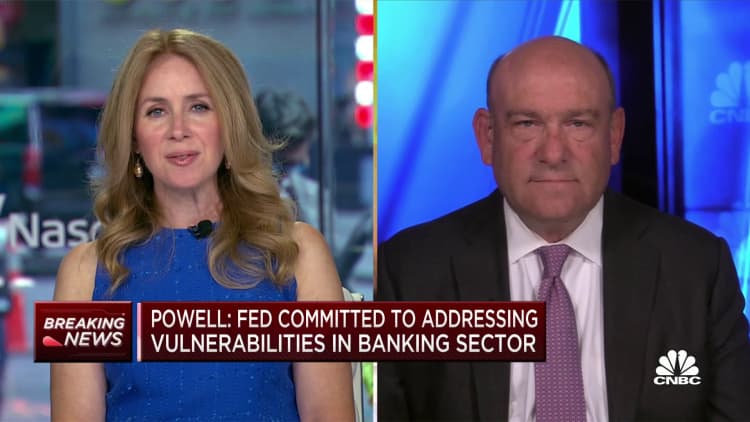Images By Tang Ming Tung | Digitalvision | Getty Images
In May, workers experienced a positive growth in their buying power for the first time in two years, as inflation continued to decline from its peak during the pandemic. This is welcome news for households, as it means they can rely more on their paychecks rather than dipping into their savings or using their credit cards for daily expenses, according to economists. The U.S. Bureau of Labor Statistics reported that “real” hourly earnings increased by 0.2% on average in May compared to May 2022.
More from Personal Finance:
– IRS weighs guidance for employee retention tax credit
– Firms ‘bombard’ small businesses with Covid-era tax credit ads
– This one-time strategy can waive IRS tax penalties
Real earnings take into account the household goods and services cost increase, as measured by the consumer price index (CPI). A positive number indicates an increase in a worker’s standard of living, while a negative number means that salaries cannot buy as much as they could a year ago. This positive annual reading in May is the first since March 2021, after workers experienced 25 consecutive months of eroding buying power, the longest stretch on record, according to Aaron Terrazas, the chief economist at Glassdoor.
“This is clearly a function of inflation starting to come down,” Terrazas said. “Real wages turned positive, and that’s great. But many people are just catching up for what has happened over the past two years.”
‘Unprecedented’ Pay Jumps During the Pandemic
In 2021, wage growth skyrocketed as businesses faced a high demand for workers due to the reopening of the U.S. economy after the Covid-induced slowdown. To compete for a limited pool of talent, employers offered unprecedented pay increases during the pandemic, according to Julia Pollak, the chief economist at ZipRecruiter. In some cases, wage growth surpassed the impact of inflation, especially for those who switched to higher-paying jobs.

However, for the average person, wage gains were overshadowed by inflation. Household bills for necessities like food, rent, and gas increased faster than paychecks. The consumer price index (CPI), a measure of inflation, reached its peak at 9.1% in June 2022, the highest level in four decades. It has since declined to 4% on an annual basis. Despite the decline in wage growth, it has still outpaced inflation, leading to an improvement in Americans’ financial well-being in May compared to the previous year.
“The trend reversal is good news for consumers, who have remarkably weathered the decline well and are now set to become even stronger,” said Pollak.
Positive Trajectory for Household Buying Power
Other economic measures also indicate an improvement in household well-being. Real disposable personal income, both in aggregate and per capita, has been rising for 10 consecutive months since June 2022, according to the most recent data from the U.S. Bureau of Economic Analysis. These measures go beyond wage growth and include income from interest, rentals, and dividends, all of which have been strong, as stated by Mark Zandi, the chief economist at Moody’s Analytics.
“This is clearly a function of inflation starting to come down.”
Aaron Terrazas
Chief Economist at Glassdoor
This trend is very encouraging for consumers, as it reduces the need to rely on savings or take on additional debt. According to the Federal Reserve Bank of New York, Americans had nearly $1 trillion in credit card debt by the end of March, a record high. Credit card interest rates are also at historic levels, exceeding 20%. Additionally, excess savings accumulated during the pandemic peaked at almost $2.5 trillion in September 2021, equivalent to 10% of the U.S. economic output. As of April, aggregate savings had fallen to $1.4 trillion, a significant decrease.
While the future of inflation and wage growth remains uncertain, a continuation of positive real earnings and income would be beneficial for households and the economy, according to experts. “The key to avoiding a recession is consumers continuing to spend at a consistent pace, and this data suggests that’s what we’re going to see,” said Zandi. “Consumers are the firewall between recession and a growing economy. The firewall is holding firm.”
Denial of responsibility! VigourTimes is an automatic aggregator of Global media. In each content, the hyperlink to the primary source is specified. All trademarks belong to their rightful owners, and all materials to their authors. For any complaint, please reach us at – [email protected]. We will take necessary action within 24 hours.


